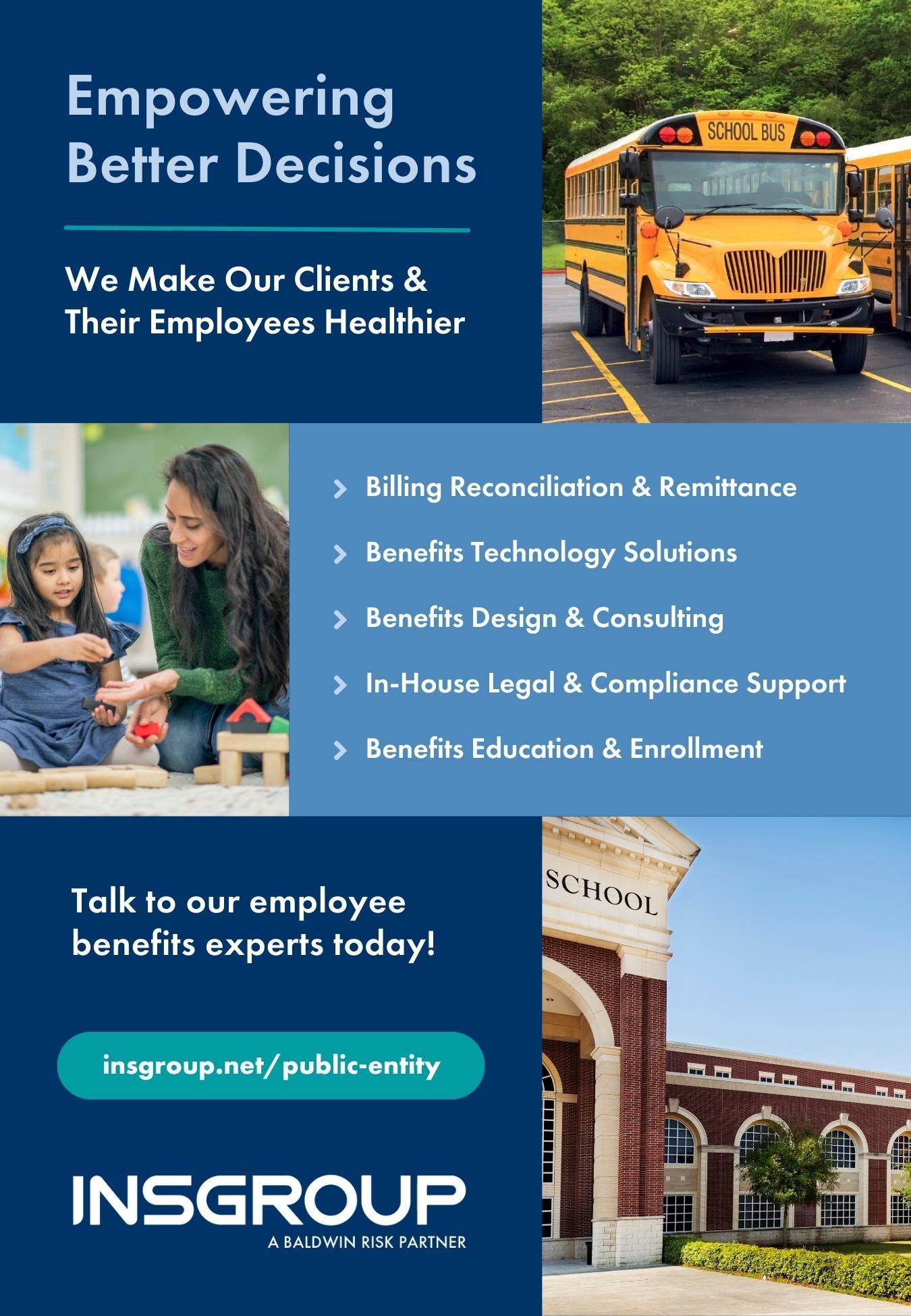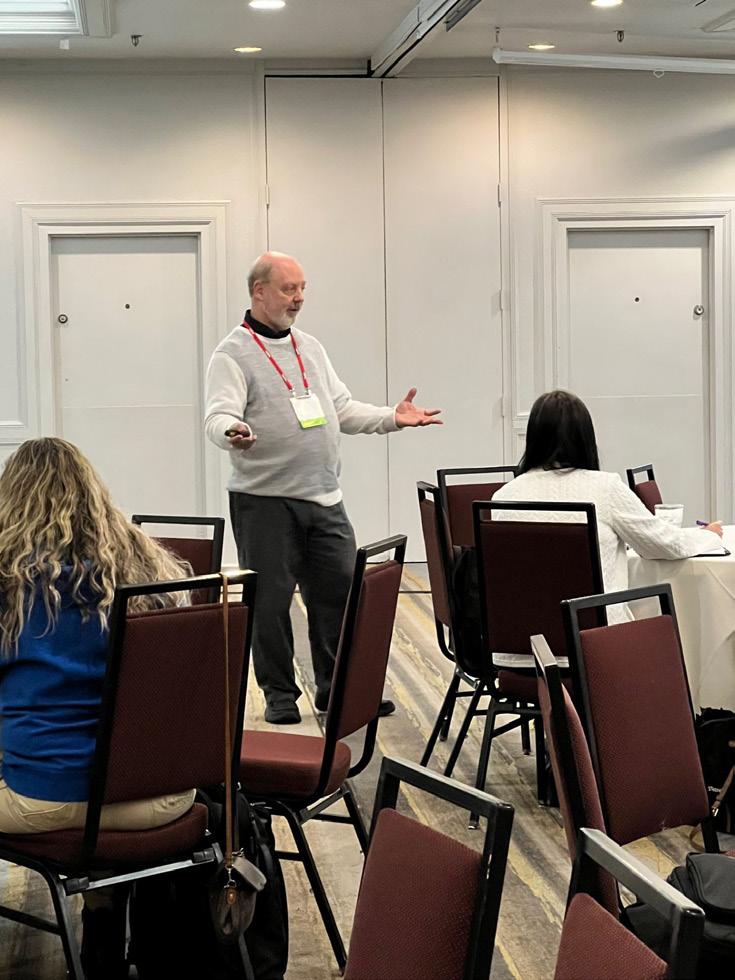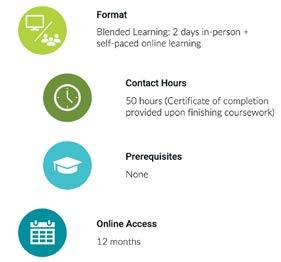








Chandelle Crane, Executive Director
Jeannie Tomasek, Director of Programs & Membership
Kathy Cervantez, Director of Communications & Professional Development
TASPA
Kimberly Rich, President, Dickinson ISD
Johjania Najera, President Elect, Keller ISD
Chris Bailey, First Vice President, Abilene ISD
Craig Lahrman, Second Vice President, Ysleta ISD
Ben Muir, Secretary, Northside ISD
Al Rodriguez, Immediate Past President, Elgin ISD
TBD, District I
Dr. Tyrone Sylvester, District II, Harris County Department of Public Education
Dr. Tamey Williams-Hill, District III, Manor ISD
Theresa Burkhalter, District IV, Waxahachie ISD
Rodney Caddell, District V, Levelland ISD
Jose Barraza, District VI, Canutillo ISD
Bonnie Herron, District I, Schertz-Cibolo-Universal City ISD
Brian Kroeger, District II, Splendora ISD
Bob Mabry, District III, Jarrell ISD
Jason Liewehr, District IV, Denton ISD
Heath Simpson, District V, Frenship ISD
Bobbi Russell-Garcia, District VI, Ysleta ISD
Dariel Ramirez, District I, United ISD
Barbara Ponder, District II, Barbers Hill ISD
Amelie Sanchez, District III, Round Rock ISD
Greg Gaston, District IV, Carrollton-Farmers Branch ISD
Paul Kimbrough, District V, Canyon ISD
Christopher Smith, District VI, El Paso ISD
Rita Uresti, District I, South San Antonio ISD
Marcus Higgs, District II, Texas City ISD
Lindsey Gonzalez, District III, Del Valle ISD
Asheley Brown, District IV, Little Elm ISD
Paige Anderson, District V, Amarillo ISD
Celina Stiles, District VI, Socorro ISD
**Includes President, President-Elect & District Representatives
Diana Silvas, Robstown ISD, District I
Dr. Nkrumah Dixon, District II, Huntsville ISD
Eddie Curran, District III, Round Rock ISD
TBD, District IV
David Manchee, District V, Amarillo ISD
Fernando Garnica, District VI, Anthony ISD
Lissa Frausto, District I, South Texas ISD
Shay Sicinski, District II, Bryan ISD
Ronnita Carridine, District III, Waco ISD
Danielle Copeland, District IV, Malakoff ISD
Robin Fawcett, District V, Ector County ISD
Jiovana Gutierrez, District VI, Ysleta ISD

Continuing Excellence: Reflecting on the East Texas Mini-Conference and Looking Ahead to Summer Engagement
Dear TASPA Community,
As we transition from a vibrant spring into the promising summer months, I am delighted to share the successes of our recent East Texas MiniConference and outline some strategies for keeping staff connected and engaged throughout the upcoming summer.
HIGHLIGHTS FROM THE EAST TEXAS MINICONFERENCE
This year’s Mini-Conference held profound learning and networking opportunities, which are vital for our continuous professional development in school administration. Among the general sessions, Marilyn Cook’s insightful presentations on “Navigating the Digital Maze for HR Professionals” and “Certification Flexibility” offered innovative strategies to optimize our HR functionalities in the face of evolving educational landscapes.
Breakout sessions were equally enriching, tackling complex issues from navigating the FMLA and Workers’ Comp to understanding legal protections for pregnant and nursing employees. The “Stay Interviews” session, led by Dr. Chaney Curran and Christy McWhorter, was particularly notable for its practical advice on retaining key staff through proactive engagement strategies.
Moreover, Dennis Eichelbaum’s sessions provided essential updates on legal HR tips and the latest on Title VII and Title IX, ensuring our practices remain compliant and best support our educational
environments.
Looking ahead to summer, keeping staff engaged and connected is crucial. Summer can be a time of disconnection, but it presents a unique opportunity to reinforce community ties and enhance professional development.
1. Continued Learning: Offer structured, lighter, more engaging professional development sessions to suit the summer mood. Topics might include innovative teaching methods, technology integration, or mental health support for educators.
2. Summer Projects: Encourage staff to engage in collaborative projects over the summer. These could be curriculum development, research projects, or community outreach initiatives that keep them connected to their peers and the mission of our schools.
3. Regular Check-Ins: Regularly communicate through emails, newsletters, and virtual meetings to ensure everyone feels included and valued. These check-ins can be an excellent time to gather feedback and generate ideas for the upcoming school year.
4. Team-Building Activities: Organize informal gatherings or team-building activities. These can help maintain the social bonds crucial for a collaborative work environment, whether online or in-person.
5. Recognition and Rewards: During the summer, we can recognize our staff’s hard work through awards or informal recognition. This can boost morale and motivation during the quieter months.
As we implement these strategies, we prepare for a successful return in the fall and foster a supportive and engaged community that thrives year-round.
Thank you for your dedication to excellence in education. Let’s look forward to a summer of connection, growth, and rejuvenation.
Warm regards,
Kimberly RichKimberly Rich is the 2024 TASPA President. She is the Executive Director for Human Resources in Dickinson ISD.
For more information and updates, please visit our website at taspa.org or call 512-494-9353.
July 17, 2024 Summer Law Conference
July 17-19, 2024 Summer Conference
The Worthington Renaissance Hotel Ft. Worth
The Worthington Renaissance Hotel Ft. Worth
August 9, 2024 Certification Fundamentals ESC Region One
August 9, 2024 Understanding Special Education HOUSSE ESC Region One
September 23, 2024 Documentation Basics Gainesville ISD
October 7-8, 2024 Fall Support Staff Conference
The Worthington Renaissance Hotel Fort Worth
October 15-18, 2024 AASPA Annual Conference Seattle, WA
December 11, 2024 Personnel Law Conference
December 11-13, 2024 Winter Conference

The Worthington Renaissance Hotel Fort Worth
The Worthington Renaissance Hotel Fort Worth


Gain




“I
Melissa H. The Tracee B. Teachers of Tomorrow Alumnus Teacher of the Year Winner
 Laurel T. School Improvement Specialist
Laurel T. School Improvement Specialist






The Worthington Renaissance Hotel Fort Worth, TX
July 17-19, 2024

Charles Bailey Director Mount Pleasant ISD
Sheri Barberee-Taylor Executive Director of Human Resources Tyler ISD
Aleathea Brewster HR Manager Canadian ISD
Cynthia Bundage Director of Performance Management Spring ISD
Tyler Burton Substitute Coordinator Abilene ISD
Kay Campbell HR Coordinator Blanco ISD
Candace Carter Benefits Coordinator Spring ISD
Christopher Carter Employee Relations Coordinator Spring ISD
Denise Carter
Leadership Development Coordinator Spring ISD
Larry Dominguez Director Birdville ISD
Brenda Dorado HR Business Partner Spring ISD
Rebecca Eaken Payroll Coordinator Lackland ISD
Blancanieves Galvan
Asst. Superintendent of Human Resources Deer Park ISD
Carlos Gonzalez
HR Business Partner Spring ISD
(February 1 - May 10)
Valerie Granado HR Coordinator Southwest ISD
Maiya Guidry Manager of Guest Employees Spring ISD
Shanna Hall HR Business Partner Spring ISD
Gayle Hemmings
Exec Secretary to Asst Supt of Talent Acquisition Spring ISD
Pearl Ivory Director of Organizational Culture Spring ISD
Carri Jackson
HR Employee Benefits Specialist Troup ISD
Christine Johnson Executive Director of Administrative Services Brenham ISD
Kendy Johnston
Assistant Superintendent of Administrative Services (effective 7/1/2024) Burkburnett ISD
Na’Taja Jones
Assistant Director of Human Resources Flour Bluff ISD
Michael Jung Executive Principal Forney ISD
Nadine Kombe Talent Aqquisition Manager Spring ISD
Kimi Kravitz Coordinator of Benefits and Employee Relations Schertz-Cibolo-Universal City ISD
Mark Mathis Director of Human Resources Springtown ISD
Jessica McAda
Superintendent’s Secretary Jourdanton ISD
Jennifer McIntyre
Director of Secondary Professional Talent Victoria ISD
Bridget Moore
Director of Compensation, Benefits & Leaves Spring ISD
Sandra Moore
Exec Secretary to the Asst Supt of HR Spring ISD
Renee’ Oliver Human Resources Assistant Alvin ISD
Aurora Ortiz Compensation Coordinator Spring ISD
Sara Perchan Certification Specialist Garland ISD
Elyse Peterson Curriculum Director Ore City ISD
Kellie Rakowitz Administrative Asst Personnel Pleasanton ISD
Kelley Robertson Business Manager Alto ISD
U’nieka Smith
Executive Assistant to the Chief of HR Spring ISD
Keli Soliz Leader of Induction and Mentor Support lead4ward
Jessica Southern Director of Human Resources Ector County ISD
Danielle Valadez Assistant Director of Human Resources College Station ISD


The primary election held on March 5 means change for the Texas Legislature as well as the State Board of Education. It also left a few seats undetermined with several races heading to a primary runoff election on May 28. Here is everything you need to know as we recap highlights from the March 5 primary election results and as you prepare to vote in the primary runoff election.
May 28 will be the Primary Runoff Election with early voting running from May 20 to May 24. If you voted in the primary election, you will be able to vote in the same party primary in which you voted in March. If you did not vote in the primary election, you can still vote in the primary runoff and are eligible to vote in either party primary. Make plans to vote now and spread the news among colleagues, family, and friends! Key runoff elections are highlighted in italics throughout the results listed below.
President Joe Biden received 85% (818,787) of the Democrat primary vote. Donald J. Trump received 78% (1,808,269) of the Republican primary vote.
All three Republican incumbent justices on the Texas Court of Criminal Appeals were defeated by their challengers. David J. Schenck beat incumbent Sharon Keller. Gina Parker took out incumbent Barbara Parker Harvey. Lee Finley captured the win over
incumbent Michelle Slaughter. The challengers were backed by Attorney General Ken Paxton, who saw sweeping success of these endorsees but was much less consistent with his Texas House endorsements.
For the Democrat primary for U.S. Senate, Colin Allred captured 59% of the votes. Allred will move on to face Ted Cruz who captured 88% of the votes in the Republican primary.
In the category of Texas Congressional races, three seats to watch are headed to a runoff in May. The open seat to replace Kay Granger for U.S. House District 12 (Fort Worth, Weatherford) heads to a runoff between Texas House Rep. Craig Goldman and John O’Shea; the Republican primary for U.S. House District 23 (San Antonio, West Texas) Incumbent Congressman Tony Gonzales will face Brandon Herrera in a runoff; and the open seat to replace Colin Allred in U.S. House District 32 (Dallas) goes to a runoff between David Blewett and Darrell Day. The winners in these races are almost certain to go on to win a general election in November based on the partisan breakdown of voters in these seats.
Patricia Hardy, the longest serving member of the State Board of Education, lost her election in SBOE District 11 to challenger Brandon Hall. Two other key seats are headed to a runoff election. Incumbent Tom Maynard in SBOE District 10 received 49% of the vote will be in a runoff against Mary Bone who captured 40% of the vote. SBOE District 11 Incumbent Pam Little received 36% of the vote will be in a runoff against Jamie Kohlmann who garnered 27% of the vote. All three challengers attempted to upset these incumbents by running to their right.
Three other incumbents won their primary reelections without any challenge: Chairman Aaron Kinsey of Midland, San Antonio Member Marisa Perez-Diaz, and Houston Member Staci Childs. The last remaining seat up for election this cycle was State Board of Education District 1, which covers a region from El Paso to San Antonio and along the border. Both parties presented a single candidate who will face off for the Democratic leaning seat in November.
In the 31-member Texas Senate, 15 seats are up for election in the 2024 election cycle. Thirteen of the 15
seats were incumbents who won their primary reelections and face little to no challenge in November. Two of those seats were open seats. In Texas Senate District 15, where Democratic challengers vied to replace the newly elected Houston Mayor John Whitmire, Texas State Rep. Jarvis Johnson and Molly Cook made the runoff. In Texas Senate District 30, Brent Hagenbuch and Jace Yarbrough will face off in a runoff election after a close Republican primary battle to replace retiring Sen. Drew Springer
TEXAS HOUSE INCUMBENTS IN RUNOFF
Republican
of Muenster.
In the Texas House, 38 incumbents won reelection, nine incumbents were defeated, and nine incumbents are headed to a runoff election. Of the open seats on the ballot, eight are headed to a runoff election and nine challengers won the primary election outright.
Governor Abbott’s efforts and
HD 1 (Paris, New Boston, Texarkana): Incumbent Gary VanDeaver and Chris Spencer
HD 21 (Jasper, Orange, Port Arthur): Incumbent Speaker Dade Phelan and David Covey
HD 33 (Rockwall, Plano): Incumbent Justin Holland and Katrina Pierson
HD 44 (Seguine, Gonzalez): Incumbent John Kuempel and Alan Schoolcraft
HD 58 (Cleburne, Burleson, Glen Rose): Incumbent DeWayne Burns and Helen Kerwin
HD 61 (McKinney, Frisco): Incumbent Frederick Frazier and Keresa Richardson
HD 64 (Denton, Decatur, Bridgeport): Incumbent Lynn Stucky and Andy Hopper
HD 91 (Fort Worth, North Richland Hills): Incumbent Stepanie Klick and David Lowe Democrat
HD 146 (Houston): Incumbent Shawn Thierry and Lauren Simmons
TEXAS HOUSE OPEN SEATS IN RUNOFF Republican
HD 12 (College Station, Huntsville, Brenham): Trey Wharton and Ben Bius
HD 29 (Pearland, Alvin): Jeffrey Barry and Alex Kamkar
HD 30 (Victoria, Bay City): Jeff Bauknight and A.J. Louderback
HD 97 (Fort Worth, Benbrook): Cheryl Bean and John McQueeney Democrat
HD 77 (El Paso): Vince Perez and Norma Chavez
HD 80 (Uvalde, Pleasanton, Carizzo Springs, Laredo): Cecilia Castellano and Rosie Cuellar
HD 97 (Fort Worth, Benbrook): Diane Symons and Carlos Walker
HD 139 (Houston): Angeanette Thibodeaux and Charlene Ward Johnson
IMPORTANT UPCOMING 2024 ELECTION DATES
Tuesday, May 28: Primary Runoff Election Day
• Early voting runs Tuesday, May 20 – Friday, May 24. Tuesday, November 5, 2024: General Election Day
• Early voting runs Monday, October 21 – Friday, November 1.
significant resources from inside and outside of the state aimed at unseating a number of incumbent Republican legislators based on their votes opposing vouchers proved effective in the primary election. Five of the targeted incumbents were unseated in the primary election and another four (Rep. Gary VanDeaver, Rep. Justin Holland, Rep. John Kuempel, and Rep. DeWayne Burns) were forced to runoff elections, which will be another tough fight.
Former President Donald Trump weighed in on many of the same targeted elections and also endorsed the opponent of Speaker Dade Phelan. Speaker Phelan now faces a high-profile runoff with David Covey in May.
PRIMARY RUNOFF ELECTION AHEAD
Major races are still set to be decided in May and your vote is significant. In the March Republican primary, 2.3 million voters or 13% of registered Republican voters made it to the polls. In the Democratic primary, turnout dipped even lower: 982,000 voters or 5.5% of registered Democratic voters. The average age of the primary voter in both parties was just under 60. Expectations for turnout in the primary runoff are even more paltry. Your vote will make a difference.
May 28 will be the Primary Runoff Election and early voting will run from May 20 to May 24.












Robb Decker & Andrea Gulley
Walsh Gallegos Kyle Robinson & Roalson P.C.
When force is used against a student, a district should anticipate the coming days to be complex and require thoughtful next steps by the district’s Human Resources department. This is because Section 22.0512 of the Texas Education Code grants immunity to professional employees (like teachers, librarians, coaches, paraprofessionals, etc.) from disciplinary proceedings for their exercise of judgment or discretion with their use of physical force against a student. A disciplinary proceeding includes any action brought by the district or state regarding the discharge, suspension, or termination of the employee. This immunity is qualified by section 9.62 of the
1 Tex. Penal Code § 9.62
2 Tex. Penal Code § 1.07(42).
Texas Penal Code, which provides that the use of non-deadly force is justified when the actor is entrusted with the care of the person for a special purpose and the “actor reasonably believes the force is necessary to further the special purpose or to maintain discipline in a group.”1 There is an exception to this immunity when there is excessive force in the discipline of students or negligence resulting in bodily injury to a student.
“Reasonable belief” means a belief that would be held by an ordinary and prudent man in the same circumstances as the actor.2 In practice, this means a school district cannot discipline an employee for using force that the employee believed was necessary. Courts held that this standard is objective—but, importantly, is viewed from the employee’s perspective. However, it does
3 Montgomery Indep. Sch. Dist. v. Davis, 34 S.W.3d 559, 567 (Tex.2000).
4 Edinburg Consol.
not mean that the employee’s narrative must be believed, nor does it mean that if the employee believed their actions were “rational,” then “the school district must determine the teacher had a rational belief.”3
A school district has the burden to prove that an employee’s use of force is not reasonable.4 Accordingly, if disciplinary action (as defined by Section 22.0512) is taken against an employee because of their use of force on a student, then it is not the responsibility of the employee to show why their actions were necessary. Instead, to justify the disciplinary action, the district must show why their use of force went beyond what an “ordinary and prudent man in the same circumstances as the actor” would do. This burden on the district is why documentation becomes so important in any investigation and
response to the use of force. Thorough procedures, coupled with a strong, well-documented investigation into the matter, should help to ensure this burden is met.
In determining whether the use of force is reasonable, the Texas Commissioner of Education applies what is commonly known as the Hogenson factors:
1. The age, sex, and condition of the child;
2. The nature of the child’s offense and their motive;
3. The influence of the child’s example on other students;
4. Whether the force was reasonably necessary to compel obedience to a proper command; and
5. Whether the force was disproportionate to the offense, is unnecessarily degrading, or is likely to cause serious injury.5
Given the frequent appeal of cases involving the use of force, the Commissioner has had many opportunities to apply the Hogenson factors, and to consider the following:
• The child’s size compared to the educator’s;6
• Whether the student is a special education student;7
• A student’s refusal to apologize to a teacher;8
• When a student curses and walks away from the teacher;9
• Destroying of classroom materials; 10
• Disruption in class to cause other people to feel in danger;11
• A school not wanting the student’s violence against a teacher to be emulated by other students;12
• Whether a teacher’s disengagement created
greater risk or danger;13
• Punching a student in the face was not reasonably necessary to enforce a teacher’s instructions;14
• Continual use of force was no longer necessary when the student stated their arm hurt “real bad” and the educator responded, “I don’t care;” 15and
• Leaving a special education student, who was afraid of the dark, in a darkened room as a form of punishment.16
Substantial evidence is needed when proving an employee’s actions were improper. Courts have successfully used student witness testimony to confirm or deny narratives.17 Some courts view whether the educator received training, and used or did not use that training, as relevant.18 But the most heavily relied upon evidence arises from information retained by an investigation report into the matter. A thorough investigation report will prove as a school district’s most helpful tool in proving its case. Knowing beforehand the importance of written testimonies, non-verbal observations, or even details that implicate the Hogenson factors (e.g., knowing the size/height of the individuals involved) can prove critical.
As with most challenging topics in human resources, proactively training those individuals who conduct investigations is critical – and training on the parameters of protection provided by Section 22.0512 is no exception. Further, a review of internal investigative report forms may prove helpful. If your district’s investigation report forms need review or perhaps have never been reviewed with the protections of Section 22.0512 in mind, there is no time like the present to take this proactive step.
5 Hogenson v. Williams, 542 S.W.2d 456, 459 (Tex. Civ. App.—Texarkana 1976, no writ).
6 Doggett v. Seguin ISD, Docket No. 022-R2-03-2019 (Tex. Comm’r Educ. May 1, 2019).
7 Lewis v. Houston ISD, Docket No. 016-R10-1107 (Tex. Comm’r Educ. 2012).
8 Peters v. Dallas ISD, Docket No. 022-R2-11-2012 (Tex. Comm’r Educ. 2013).
9 Id.
10 Doggett v. Seguin ISD, Docket No. 022-R2-03-2019 (Tex. Comm’r Educ. May 1, 2019).
11 Lee v. Dallas ISD, Docket No. 012-R2-12-2015 (Tex. Comm’r Educ. Feb. 16, 2016).
12 Stoneham v. Crowley ISD, Docket No. 036-R20-4-2022 (Tex. Comm’r Educ. June 15, 2022).
13 Id.
14 Moreno v. Donna ISD, Docket No.’s 022-R10-110, 023-R10-1110, 033-R10-1210, 041-R10-0411 (Tex. Comm’r Educ. 2013)
15 Peters v. Dallas ISD, Docket No. 022-R2-11-2012 (Tex. Comm’r Educ. 2013).
16 Allen v. Jacksboro Indep. Sch. Dist., Docket. No. 052-R1-06-2013 (Tex. Comm’r Educ. 2013).
17 Blacklock v. Houston ISD, Docket No. 004-LH-10-2023 (Tex. Educ. Agency IHE Jan. 5, 2024).
18 Stoneham v. Crowley ISD, Docket No. 036-R20-4-2022 (Tex. Comm’r Educ. June 15, 2022).











In the wake of the COVID-19 pandemic, FMLA leave has become an even more important topic as an increasing number of employees utilize its benefits. It is extremely important for employers to know the rights their employees possess and the laws protecting their ability to take job-protected leave when a sickness or other health issue renders them unable to work.
The FMLA entitles eligible employees to take up to 26 weeks of unpaid or accrued paid, job-protected leave during a 12-month period. Public and private schools, regardless of size, are covered by the FMLA. Every
employer covered by the FMLA must provide a general notice to their employees regarding the FMLA. To satisfy this requirement, employers must: (1) display or post a general notice (referred to as a poster), and (2) if the employer has any FMLA-eligible employees, provide a written general notice to employees.
Employees are entitled to FMLA leave for the birth of a child; the placement of a child through adoption or foster care; the serious health conditions of a spouse, parent, or child; a serious health condition that makes the employee unable to perform one or more of the essential functions of their job; caring for
a family member injured through military service, arranging for alternative childcare when a spouse is deployed for military service; or attending arrival ceremonies when a loved one returns from military service. Serious health conditions typically include: conditions requiring an overnight stay in a hospital or other medical care facility; conditions that incapacitate the employee or the employee’s family member for more than three consecutive days and that include ongoing medical treatment (either multiple appointments with a health care provider, or a single appointment and follow-up care, such as prescription medication); and chronic conditions that cause occasional periods when the employee or the employee’s
Chad Timmons & Nick Wilson Abernathy, Roeder, Boyd & Hullett, P.C.family member is incapacitated, and which require treatment by a health care provider at least twice a year.
Men and women are equally allowed to take FMLA leave for the birth of a child, and FMLA leave can be used for events leading up to adoption or foster care. For surgery which requires or results in an overnight stay in the hospital, the leave request would meet the definition of a serious health condition even if the surgery is considered elective.
When taking leave, the employee must designate whether they will use accrued paid leave or unpaid FMLA leave. The law permits an employer to require the employee to use accrued paid vacation leave, sick leave, or family leave for some or all of the FMLA leave period. If an employee does not timely designate FMLA leave, the employer may retroactively designate the absence as FMLA leave if the employer provides appropriate notice to the employee and the retroactive designation does not cause harm or injury to the employee. However, when paid leave is used for an FMLA-covered reason, the leave is still protected by the FMLA.
Certification may be requested for the employee’s own serious health condition; the serious health condition of the employee’s parent, spouse, or child; or for military family leave. An employer may also, in certain circumstances, require a fitness-for-duty certification at the conclusion of the employee’s leave as a condition for returning the employee to the job.
If an employer receives a complete and sufficient certification but has a reason to doubt its validity, the employer may require the employee to obtain a second opinion at the employer’s expense. If the first and second opinions reach different conclusions, the employer may require a third opinion at the employer’s expense. The third health care provider must be approved by both the employer and the employee, and the third opinion is final.
Contrary to what many believe, an employee is not guaranteed the actual job he or she held prior to the leave. When an employee returns from FMLA leave, they must be restored to the same job they held when the leave began or to an “equivalent job.” An “equivalent job” means a job that is virtually identical to the original job in terms of pay, benefits, and other employment terms and conditions (including shift and location). Employees are also entitled to
the continuation of group health insurance coverage during FMLA leave on the same terms as if he or she had continued work, provided they continue to pay all premiums during the period of leave.
Employers are prohibited from discriminating or retaliating against an employee or prospective employee for exercising or attempting to exercise any FMLA right, opposing or complaining about any unlawful practice under the FMLA, or giving information or testifying in connection with an inquiry or proceeding relating to any right under the FMLA. Discrimination occurs when: (1) the plaintiff was an eligible employee; (2) the employer was subject to FMLA requirements; (3) the employee was entitled to leave; (4) the employee gave proper notice of their intention to take FMLA leave; and (5) the employer denied them the benefits to which they were entitled under the FMLA. Retaliation occurs when: (1) the employee was protected under the FMLA; (2) the employee suffered an adverse employment action; and (3) the employee was treated less favorably than an employee who had not requested leave under the FMLA or the adverse decision was made because the employee sought protection under the FMLA.
Examples of prohibited conduct by an employer include refusing to authorize FMLA leave for an eligible employee, discouraging an employee from using FMLA leave, manipulating an employee’s work hours to avoid responsibilities under the FMLA, using an employee’s request for or use of FMLA leave as a negative factor in employment actions (such as hiring, promotions, or disciplinary actions), and counting FMLA leave under “no fault” attendance policies.
The extensive requirements the FMLA places on employers can be overwhelming. It is important for districts to refrain from restricting an employee’s ability to take FMLA leave or inflicting negative consequences on employees who take FMLA leave.
For more information about FMLA leave, please visit: https://www.eeoc.gov/laws/guidance/familyand-medical-leave-act-ada-and-title-vii-civil-rightsact-1964, or contact us at 214-544-4000.
*This article is for informational purposes only and not for the purpose of providing legal advice. You should contact your attorney to obtain advice with respect to any particular issue or problem.



Shaynah and her husband Hunter, have two children ages two and four. They enjoy watching baseball, working outdoors and family time. She is a Wayland Baptist graduate and obtained her degree in Business Management. Shaynah is in her second year in Education and began working for Burkburnett ISD in the Fall of 2022. She has served as a campus Attendance clerk, High School Registrar and began working in HR in January of 2024. Her passion is to build strong employee relationships, while helping them find their passion and assisting them along the way with a positive outlook to help them with roadblocks. Celebrating their success is her top priority. Being a BISD alum & now working for the district really allows Shaynah to share her passions,
continued
professional growth and embody the bulldog mission.
WHAT SIZE IS YOUR DISTRICT/ ESC?
Burkburnett ISD has 3260 students anad 600 employess.
CURRENT CHALLENGES IN YOUR DISTRICT:
Shortage of teachers
HOW HAS TASPA BENEFITED YOU:
The East Texas Mini-Conference benefited me in many ways. I enjoyed learning new HR processes, procedures, and policies to benefit my day-to-day work duties. It allowed me to network and meet many people who can benefit my growth and knowledge. Everyone was helpful, welcoming, and excited to share their knowledge. Looking forward to learning and networking at future events.


Hi New Friends!
I am Elyse Peterson and I currently serve as the Curriculum Director in the best 2A district in East Texas, Ore City ISD. I have been in education for 16 years and have been a classroom teacher, Instructional Technology Specialist, Dean of Student Services and Assistant Principal prior to moving on over to central administration.
The biggest challenges facing our district are competing with larger districts for great teachers and leaders and streamlining processes and procedures across departments.

WHAT ARE YOU HOPING THAT TASPA WILL PROVIDE YOU AS A MEMBER AND HOW DO YOU FEEL YOUR RECENT CONFERENCE ATTENDANCE BENEFITED YOU?
I attended the East Texas MinConference in Tyler Texas and felt it was very informational. Networking with districts, both near and far, put to bed some anxiety about moves we are making or planning to make in the near future.
The Stay Interviews session provided so much insight on how to identify areas of “Growth and Glows” within the district. I hope to see you in the future.
ELYSE PETERSON ORE CITY ISD


Jennifer A. Powell, Shareholder Eichelbaum Wardell Hansen Powell & Muñoz, P.C.
On June 27, 2023, the Pregnant Workers Fairness Act (“PWFA”) went into effect and forever codified the expectation on how pregnant employees are to be accommodated for in the workplace. Under the PWFA, employers are required to provide “reasonable accommodations” to a qualified worker’s “known limitations related to the pregnancy, childbirth, or related medical conditions.”1 On the other hand, the ceiling for the new statute stands at accommodations that create an “undue hardship on the operation of the business” for the employer.2
Furthermore, the PWFA applies to almost every type of employer—both public and
private sectors—that have more than 15 employees, including federal, state, local, and municipal agencies.3
As expected, every affected employer is probably asking: what is a “reasonable accommodation?” Well, one need look no further than the text of the new statute itself, which directly cites to the Americans with Disabilities Act (“ADA”) of 1990.4 Under the PWFA, a “reasonable accommodation” is defined to possibly include—but not necessarily limited to—the following measures:
• making existing facilities used by employees readily accessible to and usable by pregnant employees;
• job restructuring;
• part-time or modified work schedules;
• reassignment to a vacant position;
• acquisition or modification of equipment or devices;
• appropriate adjustment or modifications of examinations;
• training materials or policies;
• the provision of qualified readers or interpreters; and
• other similar accommodations for pregnant employees.5
Further, that employer may also inquire—in a more concerned tone—what would be considered an “undue hardship” under the PWFA. For this, we—once again— turn to the conveniently cited ADA text included in the new law, which states that an “undue hardship” is generally considered “an action requiring significant difficulty or expense.”6 To determine this “difficulty,” the following factors are to be weighed by the employer:
• the nature and cost of the accommodation;
• the overall financial resources of the facility or facilities involved, including the number of persons employed, the effect on expenses and resources, or the impact upon the operation of the facility;
• the overall financial resources of the employer, including the size of the business and the characteristics of its facilities; and
• the type of operations of
1 Regan Wilkins, Associate Pending Licensure, assisted with writing this article. See 42 U.S.C.A. § 2000gg-1 (West).
2 See Id.
3 See 42 U.S.C.A. § 2000gg (West).
4 See Id.
5
6
the employer, including the functions of the workforce and the overall geographic, administrative, or fiscal relationship of the utilized facilities to the employer.7
Furthermore, the PWFA also disallows employers from attempting an “end around” the reasonable accommodations requirement codified for pregnant employees. This includes prohibiting an employer from (1) requiring pregnant employees to accept accommodations that are not reasonable, (2) denying future employment opportunities to pregnant individuals due to the potential implementation of reasonable accommodations, (3) requiring pregnant employees to take a leave instead of implementing an accommodation, or (4) taking adverse employment action against pregnant employees in response to their request or usage of an accommodation.8
The Equal Employment Opportunity Commission (“EEOC”) has also presented some examples of possible accommodations, such as being able to sit or drink water, receiving closer parking, having flexible hours, receiving additional break time to use the bathroom, taking leave or time off to recover from childbirth, or being excused from strenuous activities.9 Furthermore, it is worth noting that a request will not always present itself as a “straightforward request” for an accommodation.10 Nonetheless, it should be treated as such. Just as with the ADA, employers should not require employees to use “magic words”
to invoke their rights under the PWFA.
Procedurally, the PWFA refers to the ADA and EEOC recommendation that employers engage in an “interactive process” with employees to determine the appropriate accommodation for a pregnant employee’s requests.11
Simply put, this promotes the “genuine and open” collaboration between an employer and a pregnant employee to find the appropriate “middle ground” accommodation.12 The first step of this process would be to identify the request and gather whatever information is necessary to process the request. Thereafter, the employer should openly communicate with the pregnant employee to explore possible reasonable accommodation options and may—with the permission of the pregnant employee and abiding by applicable confidentiality laws— incorporate third party advise or attention. Lastly, the employer is responsible for implementing the agreed-upon accommodation and actively monitoring the accommodation for success and/or circumstantial changes.
As you may have gleaned, the PWFA is applied on a case-bycase basis, and the applicable “reasonable accommodation” and/or “undue hardship” analysis is largely based on the business, the nature and cost of the implementation, as well as the proposed arrangement itself. While it is imperative to support pregnant employees
during an exciting and extremely challenging point in their lives, the consideration of employer resources is not ignored by the Act.
Nevertheless, the Texas Attorney General has already attacked the Act on constitutional grounds with support from at least one court.
“TEXAS V. THE FEDS” AND THE COLLATERAL EFFECT ON TEXAS PREGNANT EMPLOYEES: TEXAS V. GARLAND .
In Texas v. Garland, the United States District Court for the Northern District of Texas sided with the State of Texas and found that the passage of the PWFA violated the United States Constitution’s Quorum Clause, which requires a quorum of voting members in the House for the passage of congressional bills.13 In its legal challenge, Texas sought a permanent injunction against the federal government’s enforcement of the PWFA against the State.
The judicial opinion, signed on February 27, 2024, stated that less than a majority of the House of Representatives were physically present at the time of the PWFA’s passage. While United States Attorney General Garland attempted to argue that the Constitution does not prohibit the counting of proxies—as used in PWFA’s passage—to reach majority quorum, the Court found that the Quorum Clause is not a “majority participation requirement, but a majority-presence requirement.”14 Further, the Court analyzed the text, structure, history, and original
7 See Id.
8 See 42 U.S.C.A. § 2000gg-1 (West).
9 https://www.eeoc.gov/sites/default/files/2023-05/PWFA%20%28Healthcare%20Poster%29-11_508%20FINAL.pdf
10 For example, where a pregnant employee—without expressly asking for a new work uniform or accommodations—states that “she is having difficulty with the current, required uniform due to her pregnancy.”
11 See 42 U.S.C.A. § 2000gg(7) (West)
12 https://www.doi.gov/sites/doi.gov/files/employee-resource-effective-interactive-process.pdf
13 See Tex. v. Garland, No. 5:23-CV-034-H, 2024 WL 967838 (N.D. Tex. Feb. 27, 2024).
14 See Garland, 2024 WL 967838 at pg. 39.
understanding of the Constitution to support this controversial reasoning.15 Finally, the Court found that Texas would suffer irreparable harm through a waiver of its sovereign immunity, cost of compliance, potential litigation, and future administrative investigations.16
In conclusion, the Court awarded Texas its permanent injunction and held that the federal government was enjoined from enforcing the PWFA against the State, its divisions, and agencies.17 In response, the EEOC and the United States Department of Justice (“DOJ”) filed their notice of compliance with the decision on March 6, 2024.18
At this point, you are probably wondering: what does this mean and how does this affect pregnant Texas workers? In short, it varies. Private employees—at the moment—still enjoy the rights ensured by the PWFA, in spite of the Court’s decision. However, employees of the State cannot utilize the federal government, including the EEOC, as a means to pursue claims under the Act and must sue individually.19 As the Court outlined, upon a request by a Texas state employee, the federal government will “send a written notice to the [pregnant employee] stating that [the office] received her charge but cannot accept it, investigate it, or issue a right-to sue notice...”20 In application, this makes life a lot more difficult for pregnant state workers in Texas. While the rights ensured by the Act remain the same, the method of enforcing those rights is vastly different and less streamlined.
Another question likely rattling in the minds of Texas school officials is whether this decision has any impact on them. To that, the dreaded attorney answer, “it depends,” is probably the appropriate response. As previously presented in the Garland opinion, the injunction applies to “…the State, its divisions, and agencies…” Political subdivisions like school districts generally are not considered divisions or agencies of the State. Therefore, the opinion likely does not apply to school district employees. They will still be able to pursue PWFA claims through the EEOC exhaustion process. Be that as it may, even if an ISD is faced with PWFA
15 See generally Garland, 2024 WL 967838 at pp. 39-48.
16 See Garland, 2024 WL 967838 at pp. 49-59.
17 See Garland, 2024 WL 967838 at pg. 52.
charge, it could very well use the same arguments that the State succeeded on in Garland to potentially avoid liability.
Nonetheless, while the Court’s decision may be inconvenient to certain workers that service the Texas government, there is still some statutory authority which attempts to accommodate affected pregnant workers. Under the Texas Labor Code, sex discrimination in the workplace, including discrimination on the basis of pregnancy, is strictly prohibited.21 However, the statute does not provide anywhere near the expansive rights ensured by the PWFA.
Further, other federal statutes, such as Title VII of the Civil Rights Act, the original Pregnancy Discrimination Act, or the ADA, may provide an additional avenue for a pregnant worker to receive accommodations.22 However, many of these claims may be limited if the proposed accommodations are not offered to other similarly conditioned employees.
While Texas v. Garland may have made the process for pregnant state workers to enforce their rights more cumbersome and less efficient, those rights—yet hindered—are still well and thriving through private action. Texas ISDs, however, should plan to faithfully adhere to the standards set by the PWFA, they may have a “back up plan” through the arguments set forth in the opinion. Before pursuing the latter, counsel should always be sought.
In summary, all Texas employers should engage in interactive, open, and transparent discussions with their pregnant employees to balance the aforementioned “reasonable accommodation” with the possible resulting “undue hardship” on the employer.
18 See Tex. v. Garland, 5:23-cv-00034, (N.D. Tex. Mar 06, 2024) ECF No. 112
19 See Garland, 2024 WL 967838 at pg. 52; see generally 29 C.F.R. § 1601 (defining the procedures in place by the EEOC for filing a Pregnant Workers Fairness Act “charge” with the agency)
20 See Id.
21 See generally Tex. Labor Code Ann. § 21.106
22 See generally 42 U.S.C.A. § 2000e-2 (West).
Like most districts, Eagle Mountain-Saginaw ISD has a strong focus on recruiting and retaining the very best employees. In order to do this, we need to know what it is about their position, the campus and the district that makes them want to stay with us. EMS ISD has conducted stay interviews to better understand the answers to these questions and it has also enlightened us to what would make an employee consider leaving. The information from the stay interviews has helped us understand why employees choose us over many neighboring districts. We want to know what services we offer and what supports are in place that the employee finds attractive. The stay interview responses also help us understand how we can improve. Many districts ask employees to complete an exit interview or survey at the time they resign, but ultimately, this information can be compared to conducting an autopsy. If the employee is unhappy, has a need that is not being met, or has an experience that is less than satisfactory,
the damage is done. The exit survey only tells us what is wrong after they have decided to leave. A potentially great employee could be moving on due to something that could have been remedied had the district known there was a problem or issue. Stay interviews provide information that can be used to find trends or patterns in employee satisfaction and experiences.
In EMS ISD, we conducted three rounds of stay interviews. All three stay interviews addressed a different concern that we needed to know more about, and participation was voluntary. The first round of stay interviews took place during the 20182019 school year. The superintendent wanted to hear from employees about how we were doing. This was also an opportunity for our human resources department to go out and make connections with the campuses. There were seven campuses that were visited and 231 employees that were interviewed. Twelve carefully crafted, open-ended questions were asked. Since this was a new initiative, the interview
team wanted to be sure the employees felt at ease and the scene was inviting. There were snacks, music, door greeters, and door prizes. We realized that stay interviews could present as intimidating and that employees may be skeptical or worried about how candid they could be.
The second round of stay interviews took place in the spring of 2021. We had an unusually high number of diagnosticians resigning and needed to know why. The human resources department conducted stay interviews with those who remained. There was a total of 26 diagnosticians interviewed. The HR team deployed to the campuses and met with diagnosticians in a quiet, confidential area. This round of interviews was different from the first in that there was a significantly lower number of people interviewed and there was less prep.
The third round of stay interviews were conducted in the fall of 2022. Again, we had a large number of special education staff resign in an already hardto-fill area. It was also a challenge finding qualified applicants. We knew we needed to understand more about what was happening. All special education teachers and paraprofessionals were invited to participate in a stay interview. For this round, a letter was created for each possible participant. The letter included detailed information about what a stay interview is, what we wanted to know from them, and clearly articulate this was voluntary and confidential. A contact person in human resources was listed so the employees could reach out if they had any questions or needed clarifying information. The letters were distributed through interdistrict mail to make the stay interviews feel more personal right from the beginning.
First, be intentional and have a plan. It will be important to know what you are looking for. Are you looking to check the overall temperature of your employees for a broad understanding of how employees feel in your district? Is there a problem that you need to get to the bottom of? Do you have a campus that yields high retention, high test scores, or is consistently high achieving? In all three rounds of stay interviews, the questions were kept to 15 or fewer. The first two to three questions were typically quantitative: How long have you been in education? How long have you worked for the district? The others were qualitative. To conduct stay interviews that answer your questions, you’ll need to create your plan and identify the following:
✓ Know who your target interview group will be.
✓ How many people will you need to lead the interviews?
✓ What are your interview questions?
✓ What is your timeframe for completion?
✓ How will you collect the data?
✓ With whom and how will you collect the results?
✓ How will you market this opportunity to employees?
✓ What type of environment do you want to create for the interviews?
Stay interviews are very personal to the employees. Expect lots of emotions, personal accounts/ stories, and feedback. Patience and compassion are necessary when meeting face to face with your interviewees. They need your undivided attention; active listening will be important. Listed below are things to consider:
Be prepared to receive negative or unsatisfactory feedback with composure.
Do not make promises to fix something or make changes that you are not authorized to make. You do not want to lose credibility with the interviewees.
Send “thank you” notes or make a personal phone call or send an email. There were some employees who shared very personal stories of sadness or loss with me. I felt compelled to share a note of thanks with them for this or to check in on them if they were particularly emotional.
When the stay interviews were over, the employees were quick to show appreciation for providing a platform where they can share their thought, ideas, and experiences with us. Once we had the data collected, it was disaggregated and categorized into themes. A presentation was assembled for the District Leadership Team. The DLT worked with other central office and campus leaders who used this data for implementing change or continued support for initiatives that were deemed beneficial by the employees. The data was also used in the creating of the district and campus improvement plans. Overall, our district finds stay interviews as a useful source of information for how we recruit and retain satisfied, engaged employees.


We
take talented individuals and turn them into excellent teachers.


The quality of iteach’s alternative certification program is as vital to us as opening the doorways for more people to become teachers. We simply will not compromise on that. Ever.
THE RESULT?
iteach is the only non-institute of higher education accredited by the Council for the Acceditation of Educator Preparation (CAEP). CAEP is the highest seal of approval that assures quality in educator preparation.
Become one of our over 1500 district partners nationwide
Grow your own paraprofessionals, substitutes, and teacher aides looking to become full-time teachers
96% of administrators recommend
of HR/School administrators said they would recommend iteach based on the teacher’s ability
6x more likely to be hired
I can always count on their entire team to assist our district...
For many years iteach has been an ardent supporter of our school districts. They were one of the first in our state to have a flexible, online-based, alternative certification program for educators. I can always count on their entire team to assist our district with making sure certified educators are in our classrooms!
~ Willie Watson, Jr., SPHR, SHRM-SCP., Chief Human Resources Officer at Pflugerville ISD
96% of teachers felt prepared
of teachers felt adequately prepared for the classroom at the conclusion of their residency year
candidates in the iteach program are 6x more likely to be hired compared to our largest competitor (School Feedback Survey) (Texas Education Agency) (2023 Teacher Feedback Survey)

More than a single service or company, K12 Coalition is a collective of innovative education organizations powered by changemakers with personal insight and experience as teachers, administrators, and district leaders.

Insight Education Group’s focus is on partnering with educators to bring large-scale change and greater success to classrooms. They specialize in school improvement and leadership development, offering strategic planning, professional coaching, and equity support.

Lavinia Group is dedicated to propelling K-12 schools toward rapid academic growth in math and literacy. Renowned for its revolutionary curriculum, instructional coaching, professional development, and summer learning programs, Lavinia Group consistently achieves double-digit improvements in student performance. Its collaborative, immersive approach with educators and school leaders ensures long-term, sustainable academic success.
Visit Lavinia Group

iteach is the only CAEP-accredited online alternative teacher certification program that helps individuals who have a bachelor’s degree obtain a teaching license outside traditional pathways. iteach proudly places thousands of teachers in classrooms each year.
Coming soon, explore our TeacherFinder to locate and contact high-quality teaching candidates in your area. You can also use TeacherFinder to monitor the progress of your current iteach candidates.

Teaching Channel is a one-stop shop for teacher learning and development. From professional development courses to their innovative video platform for self-reflection and coaching, along with their vast library of exemplar videos, Teaching Channel is here to be your education ally
Visit Teaching Channel
Texas schools fully staffed— and students learning.

At Kelly Education, we’re passionate about connecting people to meaningful, life-changing work.
As the nation’s largest provider of education talent, we supply and support the people who make learning happen. From substitute teachers and paraeducators to custodians and nurses, we’re the only staffing provider who can fill critical roles across every level of the education continuum with qualified talent.
We’re here to help your district:
• Address the teacher vacancy crisis.
•Recruit, hire, onboard, and manage substitute talent.
•Prevent disruptions to teaching and learning.
•Reduce administrative burden.
•Create cost savings and operational efficiencies.
To learn more, contact: Jessica Grigsby Education Sales Consultant - Texas jessica.grigsby@kellyservices.com 210-347-8696

The TASPA 2024 Mini-Conference relocated to East Texas this year and was held on March 21-22 at the Holiday Inn Conference Center in Tyler, TX. Sixty-four attendees and eleven sponsors were in attendance. We are especially appreciative of our Black Diamond Sponsors: ESS/Proximity Learning, Frontline, iteachTEXAS, and Red Rover. With their support, we were able to bring services and professional development to East Texas.
During the two-day conference, three general sessions were presented by Marilyn Cook, Senior Director of Educator Preparation and Certification at TEA who provided a robust certification update, and Dennis Eichelbaum of Eichelbaum Wardell Hansen Powell & Muñoz, P.C. who provided great information on utilizing DOI plans. Twelve breakouts covered an array of topics presented by fifteen speakers from law firms: Abernathy Roeder Boyd Hullett, Walsh Gallegos Kyle Robinson & Roalson, P.C., and Escamilla & Poneck, LLP. Additional presenters from Eagle Mountain-Saginaw ISD, Harris County Department of Education, Malakoff ISD, Tyler ISD and the Department of Public Safety provided excellent information as well.
Many thanks to everyone who helped to make the East Texas Mini-Conference a huge success, including presenters, sponsors, TASPA board members, staff, and attendees!
We hope to see you in July at the TASPA Summer Conference!



Blended Learning Cohort | December 11-12, 2024

The Blended Cohort prepares participants to become a Certified Professional Human Capital Leader in Education (pHCLE) All learning aligns to the updated pHCLE standards The professional-level standards outline the competencies that leaders in PK-12 and related organizations need to strategically manage human capital processes at the department, team, or individual level
The pHCLE certification is appropriate for anyone who has a stake in improving people practices in education systems, including:
HR department staff
Building leaders Principals, Assistant Principals, Head of Schools
Public, private, and charter school executives including Superintendents, Assistant Superintendents, Chiefs, and Department Directors
School board members
Educator preparation faculty
State departments of education and other education-related government employees
AASPA
Members
Non-members
$300
$550
To become a Certified Professional Human Capital Leader in Education, you must obtain a passing score on the certification exam The pHCLE certification exam, which is managed by AASPA, is an additional cost. Learn more and register for the exam at HCLeader.org.


Blended Learning: 2 days in-person + self-paced online learning with 12 months access


50 hours (certificate of completion provided upon finishing coursework)
None
$1,200
Includes TASPA Winter Conference participation (conference meals, receptions, after-hours events, and Friday conference sessions)
Scan the QR code
This professional learning opportunity is brought to you in partnership with the Texas Association of School Personnel Administrators.


*Azle ISD
*Eagle Mountain -Saginaw
*Frisco ISD
*Georgetown ISD
*Gonzales ISD
*Goose Creek ISD
*Harris
*Northside
*Region
*Spring ISD
*Tuloso-Midway ISD
*Ysleta ISD
Missing a few hairs on your head? You might be spending time pulling out your hair dealing with a temperamental printer.
Relentless compliance deadlines can induce brain fog.
Struggling to recruit for open positions may lead to a heavy heart.
Work-life balance might feel out of reach — an ever-increasing workload induces a feeling of walking along an endless tight rope.
Thanks to late nights at the office and early mornings, administrators rarely get the recommended 8 hours of sleep — and wake up feeling like they have bags under their eyes.
Aches and pains pop up due to the physical strain of lugging around heavy piles of paper.
Endless manual data entry induces soreness in fingers and hands.
Constant dull aches in the pit of your stomach are common when every season brings a fresh set of challenges.
What would your day-to-day look like if you could make inefficiencies a thing of the past? With only so many hours in a day, you need to be able to make the most of your time — not only for the sake of your district, but also for your own sake.